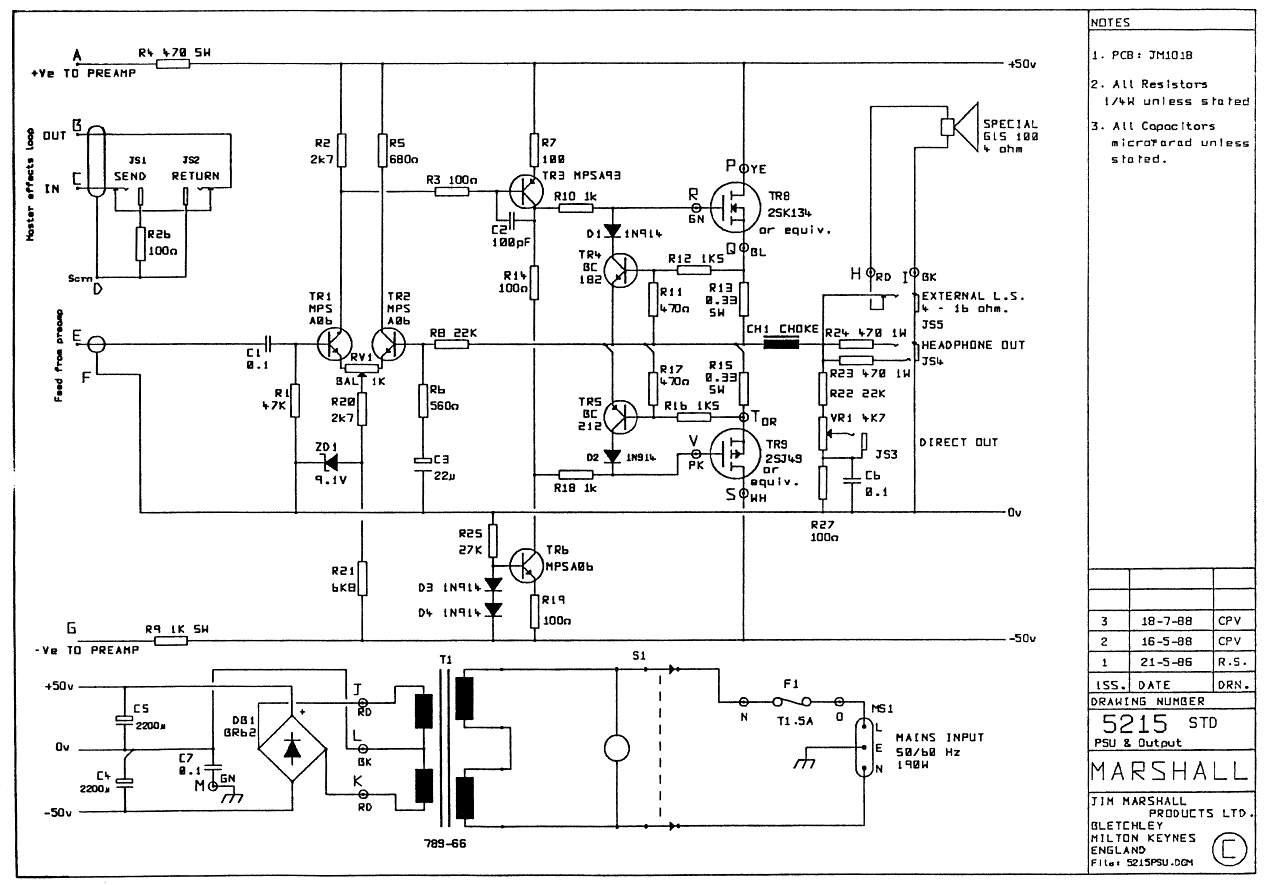You cannot view this attachment.
Here's a bit of the guts of the Ampeg. Please excuse the messiness of some of the work. I mounted the post distortion low pass on top of the board. All of the larger film capacitors are new; the original caps were those tiny beige tic-tac looking things.
At this point I'm not quite done. I've tried some different speakers with the amp to try and thicken the tone, with some success, but I have another speaker being shipped right now. Once I've tried that one I'm going to make a final adjustment to the shelved low pass. The goal is to get the combo sounding big enough on its own without the amp becoming boomy when plugged into my extension cabs. Right now I have an Eminence Swamp Thang in the amp, and it sounds pretty good.
I'm also considering modding the amp to include the Variable Harmonic circuitry (also known as Flexwave in Crate amps). It's just two resistors, one electrolytic cap, and one diode added to the clipping stage. I'm not sure if it will really improve the sound or feel of the amp, but it seems easy enough to try.
Here's a bit of the guts of the Ampeg. Please excuse the messiness of some of the work. I mounted the post distortion low pass on top of the board. All of the larger film capacitors are new; the original caps were those tiny beige tic-tac looking things.
At this point I'm not quite done. I've tried some different speakers with the amp to try and thicken the tone, with some success, but I have another speaker being shipped right now. Once I've tried that one I'm going to make a final adjustment to the shelved low pass. The goal is to get the combo sounding big enough on its own without the amp becoming boomy when plugged into my extension cabs. Right now I have an Eminence Swamp Thang in the amp, and it sounds pretty good.
I'm also considering modding the amp to include the Variable Harmonic circuitry (also known as Flexwave in Crate amps). It's just two resistors, one electrolytic cap, and one diode added to the clipping stage. I'm not sure if it will really improve the sound or feel of the amp, but it seems easy enough to try.


